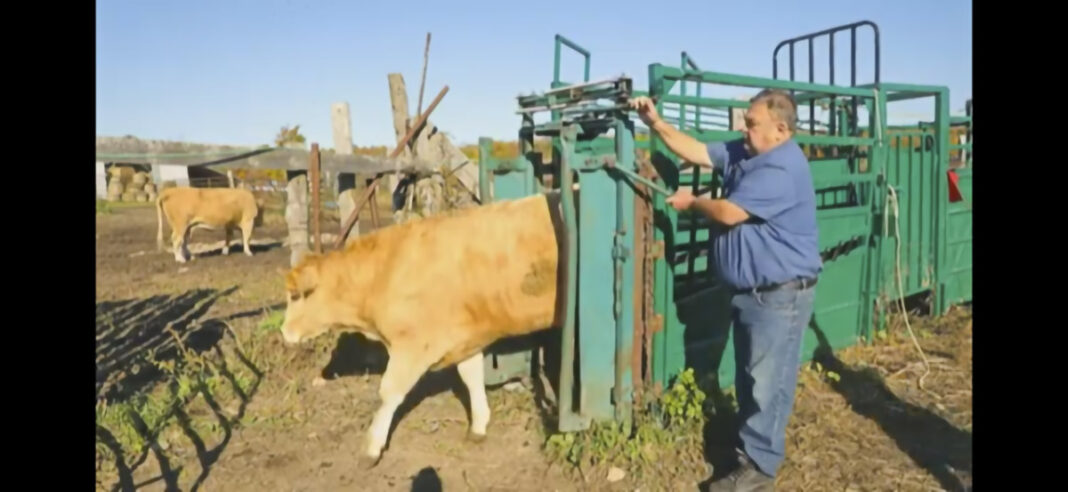GREEN BAY—Farmer Paul Skippen operates a 140-head cow-calf Limousin and Charolais beef herd, but like many long-established farms, he found himself faced with “the challenges that come with older facilities and limited labour availability.” He knew he needed equipment upgrades in order to create a safer environment for his cattle and workers. Enter the Canadian Agricultural Partnership (CAP), which provided an opportunity to upgrade cattle handling facilities on the Skippen Century Farm to improve animal welfare and enhance biosecurity.
Mr. Skippen credits the CAP application process for helping him evaluate his cattle handling needs and select the right equipment for his farm.
“The application process was an educational adventure,” explained Mr. Skippen. “It allowed me to research online, work with a local veterinarian and communicate with the Ontario Soil and Crop Improvement Association for advice to find the right set up to fit the age of my farm and my current management needs.”
Mr. Skippen noted that the challenge was to find an animal handling system that would allow two people, or even one person on their own, to safely process cattle. Additional pens were also required to address animal health needs, like quarantining or veterinary care and to improve the farm’s biosecurity. After significant research, and completing the partnership application, Mr. Skippen was able to install a new animal handling system that met all of his needs. “The new working facilities have allowed us to work safely with the animals, where we’ve been successful in protecting the cattle and workers,” he said.
Mr. Skippen received cost-share funding for facility upgrades to improve animal handling and implement new safety practices, including installing corrals, gating and a crowding tub for his beef cattle.
He said he is thankful to CAP for helping him establish better working conditions to address cattle handling and operational safety for himself, his family and veterinarians. “It’s made the process of working with cattle a lot safer and healthier for the animals. I can manage jobs like tagging, processing and needling, and easily divide cattle into different pens so I can work with them later or for the veterinarian to look at them.”
The new facilities have successfully reduced farm labour requirements, improved the ease and safety of handling cattle and has played a key role in managing herd health for Skippen Farms. “CAP has allowed us to be sustainable and it’s been a positive aspect in every way we work with cattle on this farm,” said Mr. Skippen. A video highlighting this success story can be accessed by searching ‘Skippen Farms’ on the Ontario Soil and Crop YouTube channel.
The Ontario Soil and Crop Improvement Association (OSCIA), a provincial not-for-profit farm organization, delivers cost-share funding programs and educational opportunities that support Ontario’s farmers in implementing best management and sustainability practices on their farms. The Canadian Agricultural Partnership is a five-year, $3 billion investment by federal-provincial and territorial governments, aimed at strengthening the agriculture, agri-food and agri-based products sector to ensure continued innovation, growth and prosperity.





